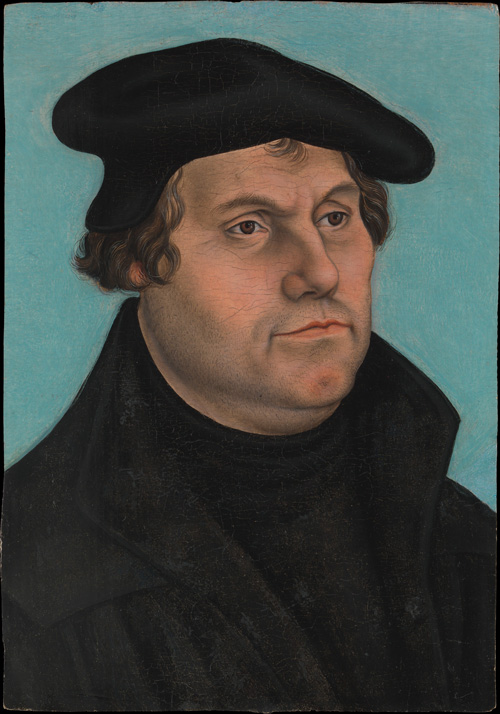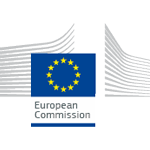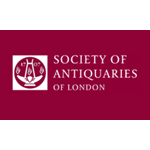Knitting in Early Modern Europe
Most extant clothing from this period belonged to the elite – royalty, aristocrats and wealthy, well-connected people – not the lower or even middle-class men and women of the day. These knitted garments represent a rare glimpse of what working people wore in their everyday lives five hundred years ago. All are hats – or more properly “caps” – made of knitted fabric and likely to have been worn by ordinary people.

A painting of one of the most famous knitted caps of the early modern era, as worn by Martin Luther (1483–1546) in his portrait dated c1532 by the workshop of Lucas Cranach the Elder, Metropolitan Museum of Art, New York (accession number: 55.220.2; Gift of Robert Lehman, 1955)
Knitware in this period relied on expertise from other crafts (or “mysteries,” as they were then known) to finish the garments made from knitted fabric. The London Fraternity of Hurers (the cappers and hatters) joined the Merchant Haberdashers in 1502, while the fullers and shearmen came together as the Clothworkers’ Company on 7 January 1528. Similar guilds were formed in other European cities such as Basel, where rules about training for cap makers were drawn up in 1521.
The knitted caps presented here tell us something about these trades – the materials they used, the processes they employed, and the trends in headwear in the fifteenth to sixteenth centuries. What they don’t give us are all the answers – from where did the materials come, how exactly were these caps knitted, and how did they look when new and worn to keep out the cold, protect against the wind and rain, and cut a fashionable figure in the streets of Bern, at the theatre in London or on board the Gagiana?
 The Knitting in Early Modern Europe (KEME) project was funded in part by an individual post-doctoral Marie Skłodowska Curie Research Fellowship from August 2015 to July 2017 (grant agreement 656748) awarded by the European Commission. KEME continues with the support of
The Knitting in Early Modern Europe (KEME) project was funded in part by an individual post-doctoral Marie Skłodowska Curie Research Fellowship from August 2015 to July 2017 (grant agreement 656748) awarded by the European Commission. KEME continues with the support of  Marie Skłodowska-Curie Individual Fellowships are awarded to enhance the creative potential of experienced researchers, diversify their technical or scientific expertise, and acquire new interdisciplinary skills through advanced training in another EU country. Dr Jane Malcolm-Davies received a MSC fellowship to work at the Centre for Textile Research, Copenhagen from August 2015 to July 2017.
Marie Skłodowska-Curie Individual Fellowships are awarded to enhance the creative potential of experienced researchers, diversify their technical or scientific expertise, and acquire new interdisciplinary skills through advanced training in another EU country. Dr Jane Malcolm-Davies received a MSC fellowship to work at the Centre for Textile Research, Copenhagen from August 2015 to July 2017.
 Initial research into medieval and early modern gloves was funded by a
Initial research into medieval and early modern gloves was funded by a 